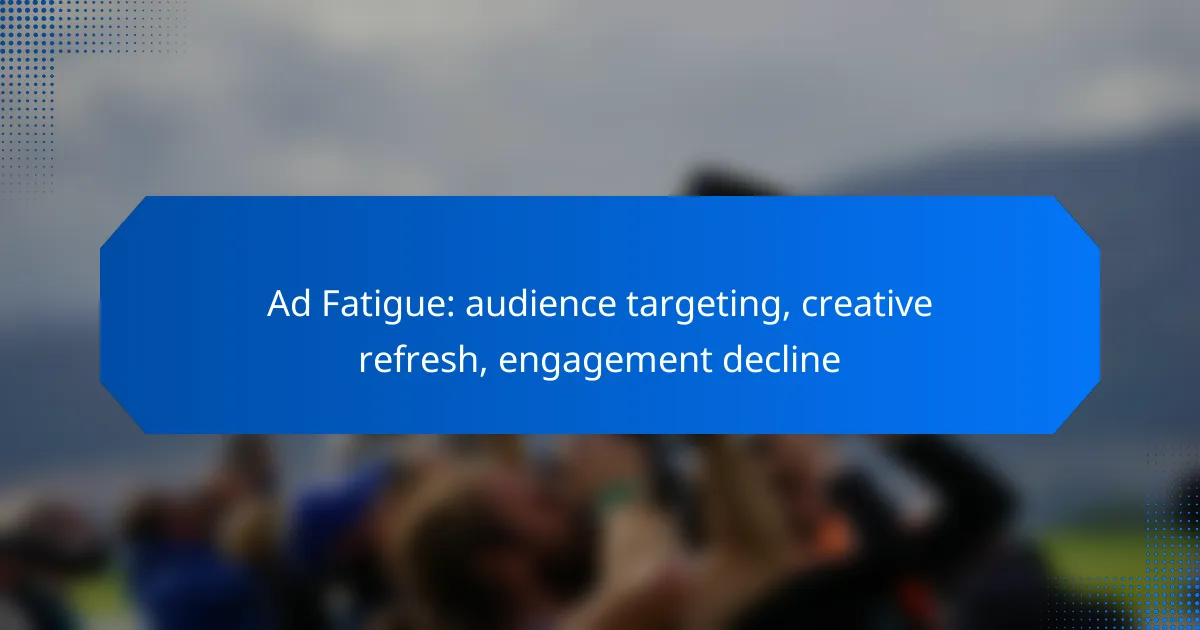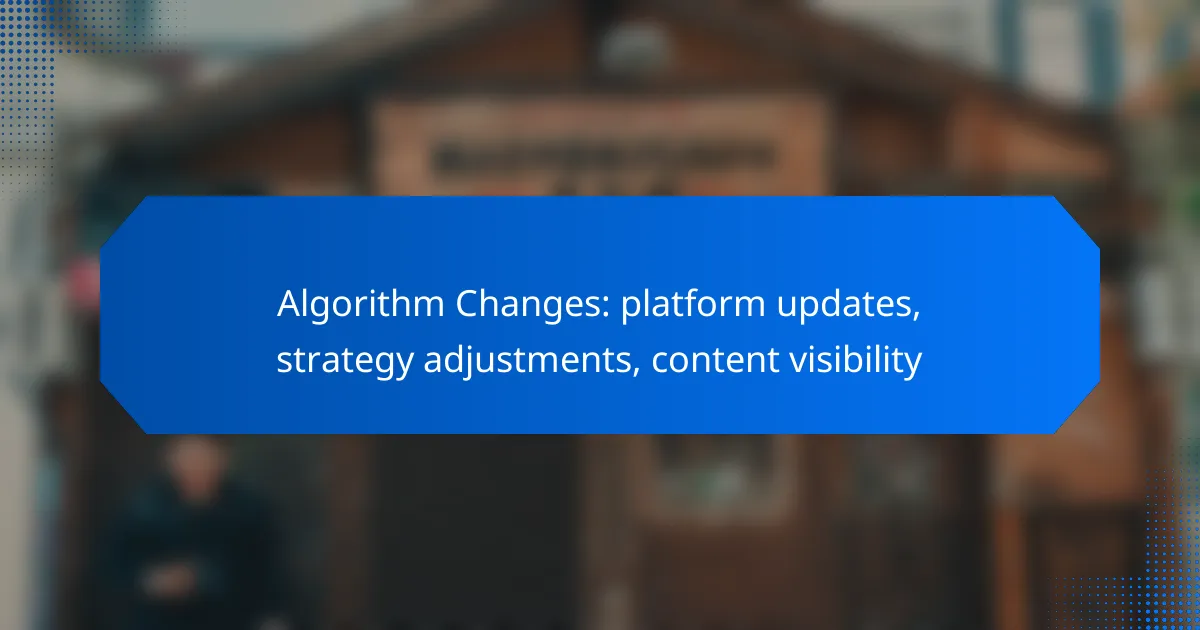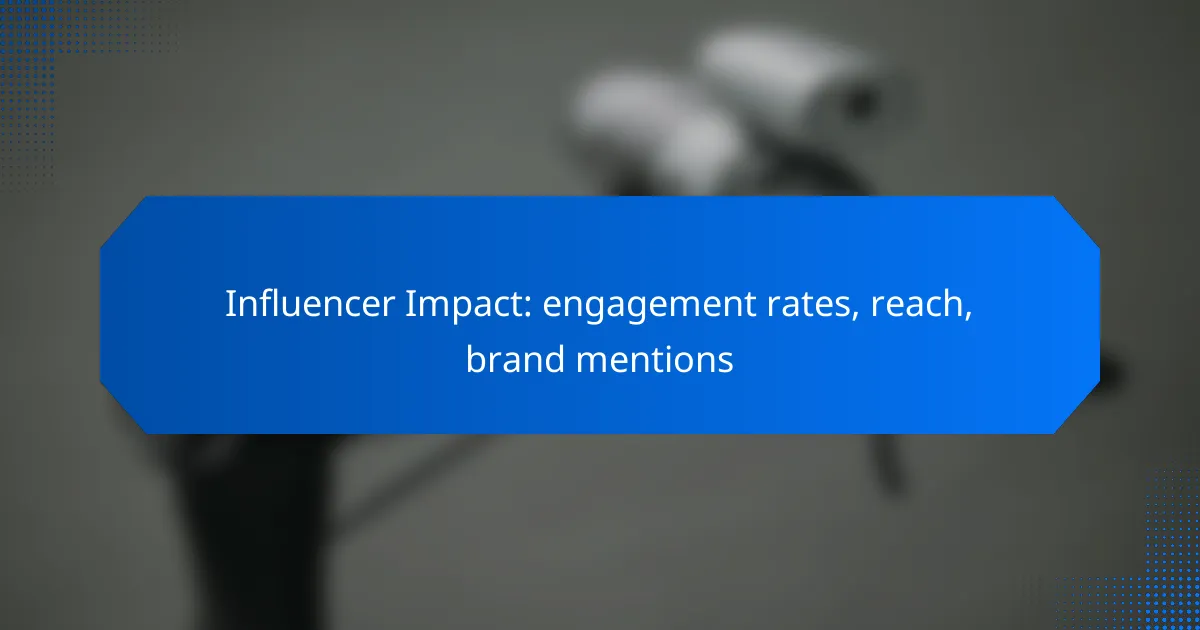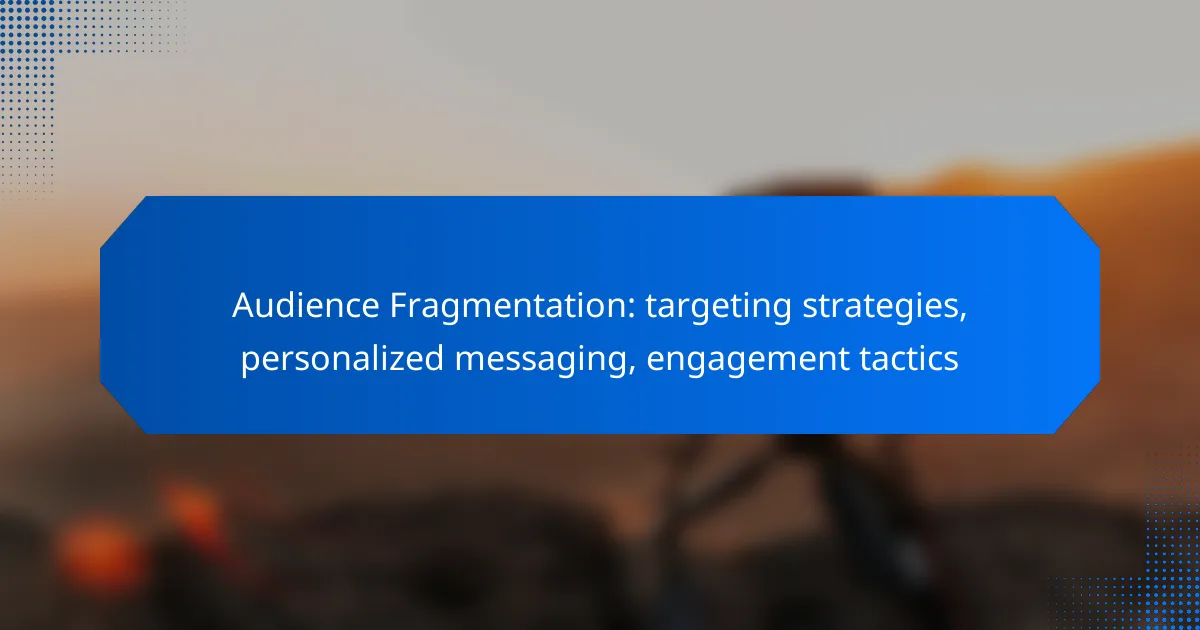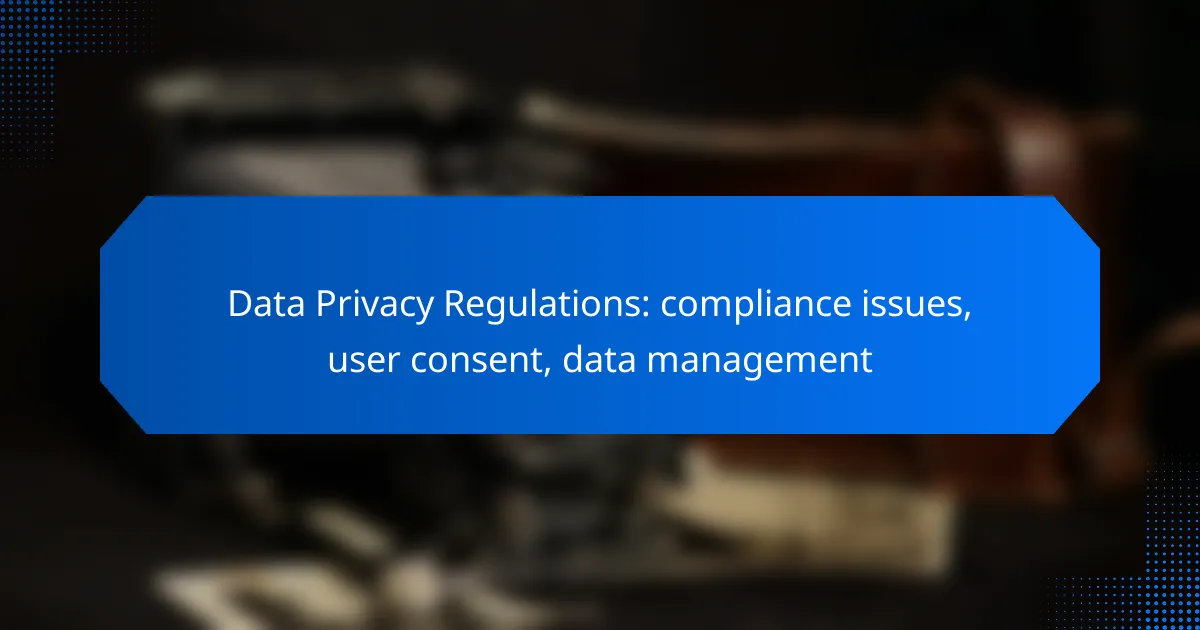Challenges in Digital Marketing
Digital marketing in Australia is confronted with several significant challenges that can hinder its effectiveness and return on investment. Key issues include ad fatigue, stringent data privacy regulations, market saturation, evolving consumer behavior, and the complexities of technology integration. Addressing these challenges requires innovative strategies and a keen understanding of the shifting landscape to maintain engagement and compliance.
Ad Fatigue: audience targeting, creative refresh, engagement decline
Ad fatigue is a common challenge faced by marketers, characterized by a decline in audience engagement due to overexposure to repetitive advertisements. To effectively combat this issue, it is essential to refine audience targeting, refresh creative content, and closely analyze engagement metrics. By implementing these strategies, brands can sustain user interest and enhance overall ad […]
Algorithm Changes: platform updates, strategy adjustments, content visibility
The latest algorithm changes in Australia have a profound effect on content ranking and visibility across search engines. To navigate these updates successfully, content creators must refine their strategies by enhancing content quality, optimizing SEO practices, and leveraging data analytics tools. What are the latest algorithm changes affecting content visibility in Australia? The latest algorithm […]
Influencer Impact: engagement rates, reach, brand mentions
Influencer marketing has become a pivotal strategy for brands seeking to enhance their visibility and engagement. Key metrics such as engagement rates, reach, and brand mentions play a significant role in evaluating the effectiveness of influencer partnerships. In Australia, understanding these metrics allows brands to tailor their campaigns for maximum impact and audience interaction. How […]
Audience Fragmentation: targeting strategies, personalized messaging, engagement tactics
In today’s fragmented audience landscape, effective targeting strategies are essential for businesses looking to connect with diverse consumer segments. By employing behavioral targeting and demographic segmentation, companies can tailor their marketing efforts to meet specific needs, enhancing engagement and conversion rates. Personalized messaging further strengthens this connection by making communication more relevant, while interactive engagement […]
Data Privacy Regulations: compliance issues, user consent, data management
Data privacy regulations play a critical role in safeguarding personal information and ensuring organizations adhere to legal standards. Compliance involves implementing proactive measures such as regular audits, data protection policies, and employee training to manage user consent effectively. Understanding these regulations is essential for organizations to navigate the complexities of data management while respecting individual […]
Resource Limitations: staffing issues, time constraints, budget allocation
Resource limitations, including staffing issues, time constraints, and budget allocation, pose significant challenges for organizations. To navigate these constraints, companies can adopt flexible hiring strategies, optimize workflows, and implement effective budgeting techniques. By prioritizing tasks and enhancing employee skills, organizations can maximize their resources and achieve their goals more efficiently. What are the staffing solutions […]
Technology Integration: tool compatibility, workflow optimization, data silos
Effective technology integration is crucial for organizations seeking to enhance tool compatibility, optimize workflows, and eliminate data silos. By leveraging automation platforms and communication tools, businesses can ensure seamless communication between software applications, thereby improving collaboration and efficiency. Addressing data silos is essential for fostering a more connected environment where information flows freely across departments. […]
Content Performance Metrics: shares, comments, backlinks
Understanding content performance metrics such as shares, comments, and backlinks is crucial for evaluating audience engagement and establishing authority. These indicators not only reflect how well your content connects with readers but also play a significant role in driving traffic and enhancing credibility. By effectively tracking these metrics, you can refine your strategies to maximize […]
Measurement Challenges: data accuracy, metric selection, analysis complexity
Measurement challenges in data accuracy, metric selection, and analysis complexity can significantly impact decision-making processes. Ensuring reliable data collection and validation is crucial for maintaining integrity, while selecting the right metrics is essential for deriving meaningful insights. Additionally, the intricacies of data analysis, including managing interdependencies and large datasets, can complicate efforts to achieve accurate […]
Market Competition: competitor analysis, differentiation strategies, market share
In today’s competitive landscape, conducting a thorough competitor analysis is essential for businesses aiming to enhance their market share. By identifying key competitors and evaluating their strengths and weaknesses, companies can develop effective differentiation strategies that highlight their unique offerings. This not only helps in capturing specific customer needs but also fosters brand loyalty, ultimately […]
What are the key challenges in digital marketing in Australia?
Digital marketing in Australia faces several key challenges that can impact effectiveness and ROI. These include ad fatigue, data privacy regulations, market saturation, changing consumer behavior, and technology integration.
Ad fatigue
Ad fatigue occurs when consumers become overly exposed to the same advertisements, leading to decreased engagement. This challenge is particularly relevant in Australia, where consumers are bombarded with digital ads across various platforms.
To combat ad fatigue, marketers should rotate ad creatives regularly and diversify their messaging. Utilizing A/B testing can help identify which ads resonate better with the target audience.
Data privacy regulations
Data privacy regulations, such as the Australian Privacy Principles (APPs), impose strict guidelines on how businesses collect and use consumer data. Marketers must navigate these regulations to ensure compliance while still gathering valuable insights.
To address this challenge, businesses should prioritize transparency in data collection practices and invest in secure data management systems. Regular training for staff on compliance can also mitigate risks associated with data breaches.
Market saturation
Market saturation refers to the point at which a product or service has been maximally distributed, making it difficult for new entrants to gain traction. In Australia, many industries are highly competitive, leading to a crowded digital marketing landscape.
To stand out, businesses should focus on niche marketing strategies and unique value propositions. Leveraging local partnerships can also enhance visibility and credibility in saturated markets.
Changing consumer behavior
Consumer behavior is constantly evolving, influenced by trends, technology, and societal shifts. In Australia, digital marketers must stay attuned to these changes to effectively reach their target audience.
Regularly analyzing consumer data and feedback can help marketers adapt their strategies. Engaging with customers through social media and surveys can provide insights into their preferences and expectations.
Technology integration
Integrating new technologies into digital marketing strategies can be challenging, especially for smaller businesses. In Australia, keeping up with advancements such as AI, automation, and analytics tools is crucial for staying competitive.
Marketers should assess their current technology stack and identify gaps that could be filled with new tools. Investing in training for staff on new technologies can also enhance overall marketing effectiveness.
How can businesses overcome ad fatigue?
Businesses can overcome ad fatigue by refreshing their advertising strategies and focusing on engaging content. This involves creating diverse and appealing ads that resonate with the target audience while also managing the frequency of exposure.
Creative content strategies
Implementing creative content strategies is essential to combat ad fatigue. Businesses should focus on storytelling, humor, or emotional appeal to capture attention. For instance, using video content or interactive ads can significantly enhance engagement compared to static images.
Regularly updating ad creatives and incorporating user-generated content can also provide fresh perspectives. This approach not only revitalizes the ads but also fosters a sense of community among consumers.
Audience segmentation
Effective audience segmentation allows businesses to tailor their ads to specific groups, reducing the risk of ad fatigue. By analyzing demographics, interests, and behaviors, companies can create targeted campaigns that speak directly to the needs of different segments.
Utilizing tools like customer personas can help identify which messages resonate best with each group. This ensures that the content remains relevant and engaging, minimizing repetitive exposure to the same ads.
Frequency capping
Frequency capping is a crucial tactic to limit how often a user sees the same ad, helping to prevent ad fatigue. Setting a cap on impressions per user per day or week can keep the advertising experience fresh and engaging.
Businesses should monitor performance metrics to determine optimal frequency levels. A common approach is to limit exposure to a few impressions per day, adjusting based on audience response and engagement rates.
What are the impacts of data privacy regulations on digital marketing?
Data privacy regulations significantly affect digital marketing by imposing strict guidelines on how consumer data can be collected, stored, and used. These regulations, such as the GDPR in Europe and CCPA in California, require marketers to adapt their strategies to ensure compliance while still effectively reaching their target audiences.
Compliance costs
Compliance with data privacy regulations often incurs substantial costs for businesses. Companies may need to invest in legal consultations, data protection technologies, and employee training to ensure adherence to these laws. These expenses can range from thousands to millions of dollars, depending on the size and complexity of the organization.
Additionally, ongoing compliance efforts require continuous monitoring and updates to policies and practices, which can strain resources. Businesses should budget for these costs and consider them as part of their overall marketing strategy.
Limited data access
Data privacy regulations restrict access to consumer data, making it challenging for marketers to gather insights. With limitations on tracking and data sharing, marketers may find it difficult to create detailed customer profiles or analyze behavior effectively. This can lead to less personalized marketing efforts.
To navigate these restrictions, businesses should explore alternative data sources, such as first-party data collected directly from customers. Building strong relationships with consumers can enhance data collection while maintaining compliance.
Changes in targeting strategies
With data privacy regulations in place, marketers must adjust their targeting strategies to comply with new rules. Traditional methods that relied heavily on third-party cookies are becoming less effective, prompting a shift towards more privacy-conscious approaches.
Marketers should focus on contextual advertising and utilize first-party data to create targeted campaigns. Emphasizing transparency and obtaining explicit consent from consumers can also help build trust and improve engagement in a regulated environment.
How does market saturation affect digital marketing efforts?
Market saturation significantly impacts digital marketing by increasing competition and driving up customer acquisition costs. As more businesses enter the digital space, standing out becomes increasingly challenging, necessitating innovative strategies to capture consumer attention.
Increased competition
In a saturated market, numerous brands vie for the same audience, making it difficult to gain visibility. Companies must invest more in advertising and promotional strategies to differentiate themselves from competitors. This often leads to a crowded digital landscape where unique selling propositions become essential.
For example, in industries like e-commerce, brands may need to explore niche markets or unique product offerings to avoid competing solely on price. Engaging content and targeted marketing campaigns can help attract and retain customers amidst the competition.
Higher customer acquisition costs
As competition intensifies, the cost to acquire new customers often rises. Businesses may find themselves spending significantly more on pay-per-click advertising or social media promotions to achieve the same level of engagement. This increase can strain marketing budgets, especially for small to medium enterprises.
To manage these costs, companies should focus on optimizing their marketing funnels and improving conversion rates. Techniques such as retargeting and personalized marketing can enhance customer engagement and reduce the overall cost of acquisition.
Need for differentiation
In a saturated market, differentiation is crucial for success. Brands must clearly communicate what sets them apart, whether through unique product features, exceptional customer service, or innovative marketing approaches. Without a strong differentiator, businesses risk blending into the background.
Strategies for differentiation can include developing a strong brand identity, leveraging customer testimonials, and creating engaging content that resonates with target audiences. Regularly assessing competitors and market trends can also help identify opportunities for standing out in a crowded marketplace.
What strategies can address changing consumer behavior?
To effectively address changing consumer behavior, businesses should implement strategies that leverage real-time analytics, personalized marketing, and agile marketing approaches. These methods allow marketers to adapt quickly to shifts in consumer preferences and enhance engagement.
Real-time analytics
Real-time analytics involves collecting and analyzing data as it is generated, enabling businesses to respond swiftly to consumer actions. This approach helps identify trends and patterns that can inform marketing strategies. For instance, tracking website traffic and social media interactions can reveal what content resonates most with audiences.
To implement real-time analytics, consider using tools like Google Analytics or social media dashboards that provide instant insights. Regularly review this data to adjust campaigns and optimize customer experiences based on current consumer behavior.
Personalized marketing
Personalized marketing tailors messages and offers to individual consumers based on their preferences and behaviors. This strategy increases relevance and engagement, leading to higher conversion rates. For example, using customer data to recommend products based on previous purchases can significantly enhance the shopping experience.
To effectively personalize marketing efforts, segment your audience and create targeted campaigns. Utilize email marketing platforms that allow for dynamic content based on user behavior, ensuring that each message feels unique and relevant to the recipient.
Agile marketing approaches
Agile marketing focuses on flexibility and rapid iteration, allowing teams to quickly test and adapt strategies based on consumer feedback. This approach fosters a culture of experimentation, where marketers can pivot campaigns in response to real-time data and market changes. For example, A/B testing different ad creatives can help determine which resonates best with the target audience.
To adopt agile marketing, establish cross-functional teams that can collaborate on projects and share insights. Set short-term goals and regularly review performance metrics to refine strategies, ensuring that marketing efforts remain aligned with evolving consumer needs.
What technology integrations are essential for digital marketing?
Essential technology integrations for digital marketing include tools that streamline processes, enhance customer engagement, and provide data analytics. These integrations help businesses optimize their marketing strategies and improve overall performance.
Marketing automation tools
Marketing automation tools are software solutions that automate repetitive marketing tasks, allowing businesses to focus on strategy and creativity. These tools can manage email campaigns, social media posting, and lead generation, significantly increasing efficiency.
When selecting a marketing automation tool, consider factors such as ease of use, integration capabilities with existing systems, and scalability. Popular options include HubSpot, Marketo, and Mailchimp, each offering unique features suited for different business sizes and needs.
To maximize the benefits of marketing automation, ensure you segment your audience effectively and personalize your communications. Avoid common pitfalls like over-automating, which can lead to a lack of personal touch, and regularly review your campaigns to adjust strategies based on performance metrics.
